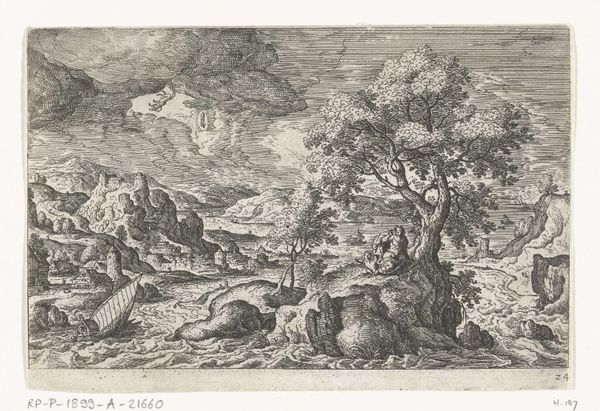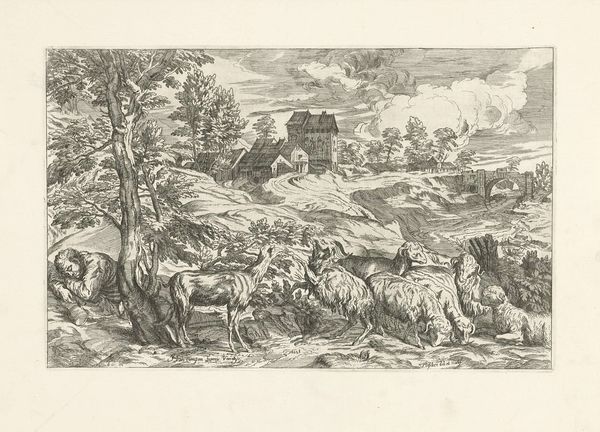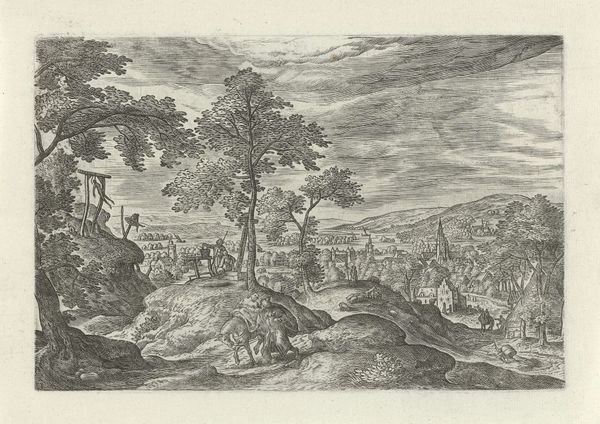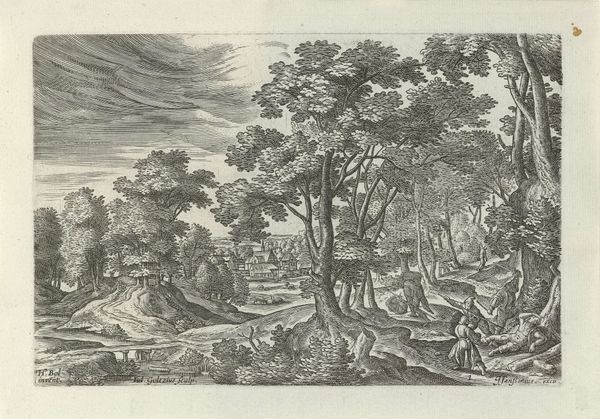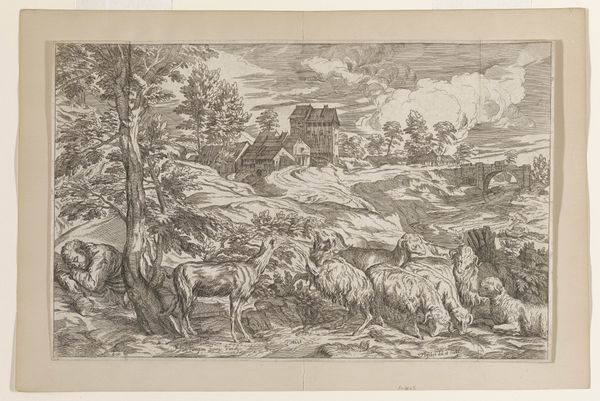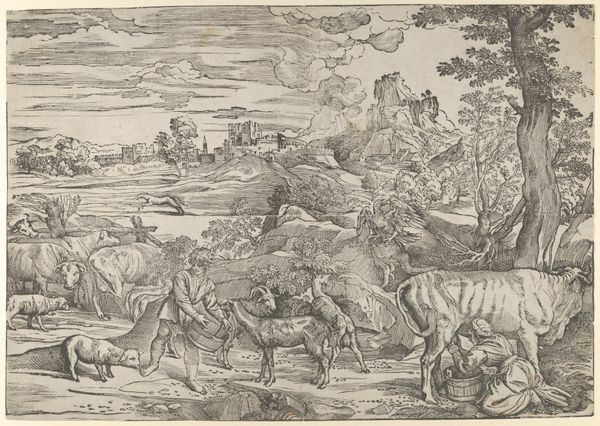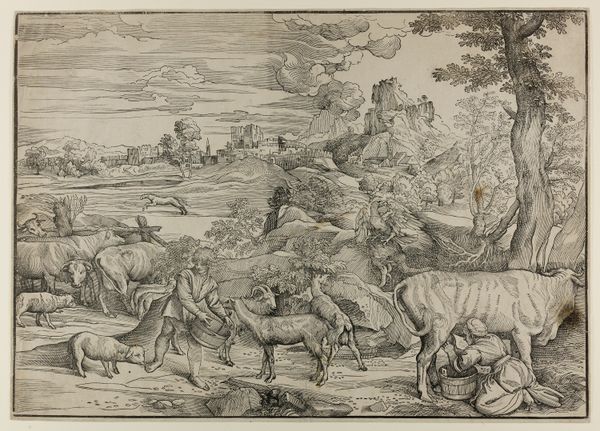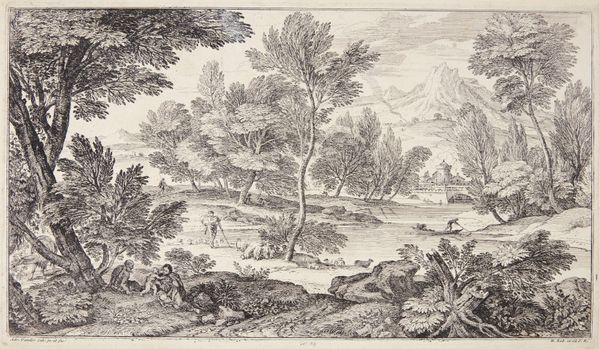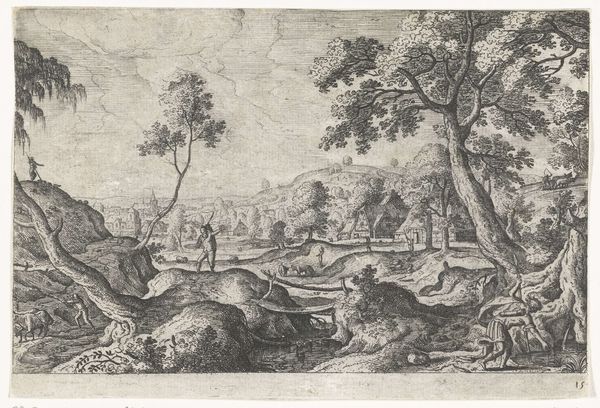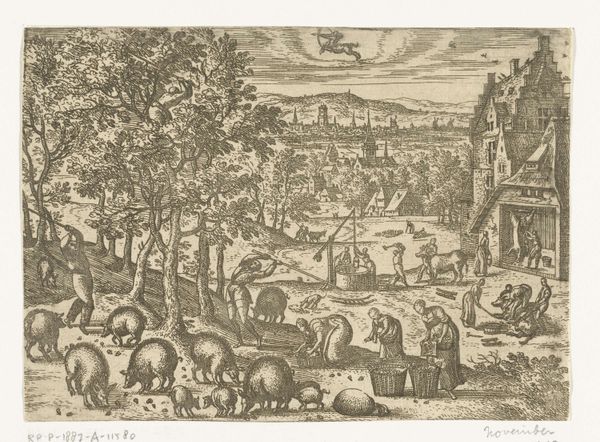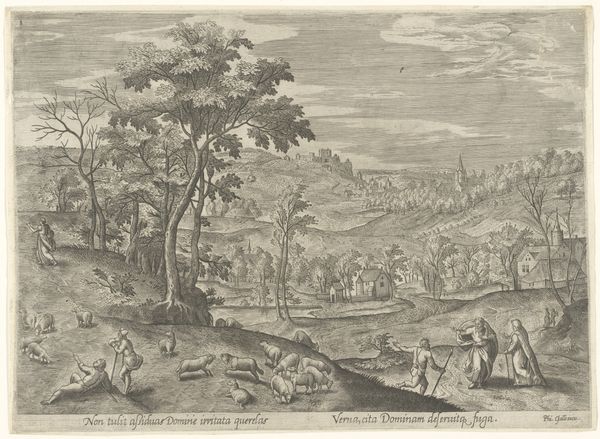
Landschap met de reiziger die door de barmhartige Samaritaan wordt verzorgd c. 1560 - 1595
0:00
0:00
print, engraving
# print
#
pen sketch
#
pencil sketch
#
old engraving style
#
landscape
#
mannerism
#
genre-painting
#
northern-renaissance
#
engraving
Dimensions: height 117 mm, width 174 mm
Copyright: Rijks Museum: Open Domain
This landscape showing the Good Samaritan was made by Julius Goltzius, probably in the late 16th century, using an engraving technique. Engraving involves painstakingly cutting lines into a metal plate, which is then inked and printed. Look closely, and you can appreciate the labor invested in creating this intricate scene. Notice how the varying density of lines creates a sense of depth, light, and texture, from the delicate foliage to the rolling hills. The engraver’s skill transforms a humble metal plate into a window onto another world. But why choose engraving for a landscape? It's a clue that this image was designed for wide circulation. Prints like this were relatively affordable, making art accessible to a broader audience. So, while seemingly traditional, the choice of engraving hints at an emerging art market, one where images could be reproduced and consumed on a scale previously unimaginable. This print reveals the social and economic context in which it was made.
Comments
No comments
Be the first to comment and join the conversation on the ultimate creative platform.

